What is biophilia and why is it trending

My hubby and I don’t have a lot of natural green in our house, largely because I can’t grow anything. People who give me plants do so at their own risk, so to speak – I usually warn them that their gift probably won’t survive. I do have one plant that’s still hanging in there, a curly bamboo given to me years ago by my hubby in a fit of optimism.
This may explain why I compensate by going for lots of walks in gardens and forests, in effect getting my ‘greens’ from an external source. Disclaimer: I can grow shrubbery, i.e. anything that’s self-sufficient once it’s been planted.
But there’s a trending theory about why we’re drawn to green, natural spaces: it’s called “biophilia”. The word literally means ‘love of life’, and it encompasses all things living, from the plants in nature to the soil they grown in and the animals that make outdoor places their home. The theory is that since we evolved in nature, we’re genetically tuned to feeling most comfortable in that environment.
Our modern society seems to have forgotten that, encasing us in brick and concrete jungles, but the concept is being reintroduced as a way to save both our health and our sanity. Living apart from nature isn’t good for us – it leads to stress, anxiety, stress-related illnesses and poor mental health.
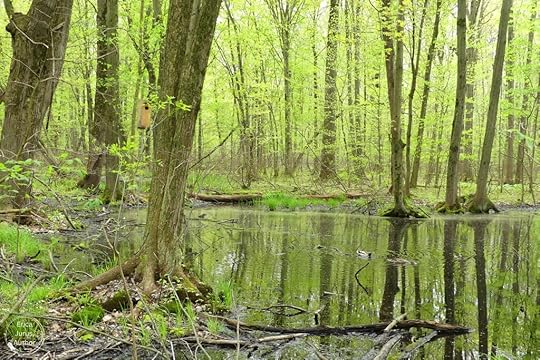 Surrounded by vivid spring green at Heartland Forest, Niagara Falls
Surrounded by vivid spring green at Heartland Forest, Niagara FallsIn the 1980s the Japanese came up with the idea of shinrin-yoku, aka “forest bathing”, which means immersing yourself in a forest atmosphere – not just going for a hike, but being in the moments, observing all the small, wonderful things that a forest has to offer. Tiny flowers at the bases of trees, squirrels scampering through, frogs squeaking in ponds, intricate fungi on logs, a haze of joyous green surrounding you.
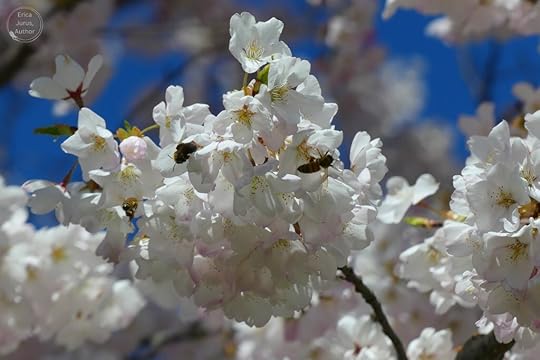 Tiny bees flooding the cherry blossoms at the Royal Botanic Gardens, Hamilton
Tiny bees flooding the cherry blossoms at the Royal Botanic Gardens, HamiltonLast week a friend and I made a pilgrimage to the Arboretum of the Royal Botanic Gardens in Hamilton to view the cherry blossoms. It was a man-made forest, to be sure, but still a gorgeous stroll through masses of exuberantly blooming trees. The sky was a deep, cloudless blue, and the flowers were both opening up their petals and letting soft breezes shower them upon visitors. Butterflies flitted happily from tree to tree, and at one busy tree I stopped my friend and asked, “Do you hear that, or am I imagining it?” She heard it too: a susurrus of gentle buzzing from hundreds of tiny bees all gathering nectar among the branches. We stood by the tree, entering its ‘home’ for a while, and felt privileged for the experience.
 A froth of yellow celandine poppies in the Niagara Falls Botanic Garden
A froth of yellow celandine poppies in the Niagara Falls Botanic GardenMan-made gardens have the same effect on me as walking in the woods, and a lot of it has to do with colour psychology. Green is well-known to bring up feelings of hope, growth and freshness, and underpins everything in a garden, especially in springtime. Walking among the flowers, we look at the pink ones as blooms of softness, while vibrant red flowers, like spring tulips, are exciting and passionate. My favourite flowers are all yellow – daffodils, yellow roses – and make people think of joy (although, because of the colour’s visibility, humans use it to denote danger). Orange flowers offer warmth, and symbolize kindness. Blue flowers look peaceful, while purple blooms have an air of glamour about them, and black ones denote mystery. White flowers make us think of purity and truth. A garden stroll engulfs us in a living piece of artwork where we can bathe in all of those colours and emotions, and the remarkable beauty of each flower’s form.

Ancient cultures, including Egyptian and Chinese, practiced chromotherapy – using colors for healing – and it’s still in use today as a holistic practice, following many of the same principles as colour psychology: red to stimulate the mind and body and increase circulation, yellow to stimulate the nerves, blue to soothe and treat pain, and so on. Interestingly, in modern medicine colours also play a role: pills coloured white are associated with greater pain relief, while red ones are associated with having greater stimulant properties. Think of all the analgesics you can buy over the counter – they’re often white or have a red coating or a blue tint.
Colour psychology is a fascinating subject, and in a later post we’ll look at it in more detail, but for now we’ll concentrate on the effects of spending time in natural environments. Hotels, lodges and resorts are starting to offer programs or ‘opportunities’ to get you out into their lovely surroundings, which isn’t a bad idea at all, but you don’t need to spend that amount of money. In Ontario we’re blessed with plenty of gardens and wooded areas, and even things like golf courses, which (apart from the frustrations of the game) are often incredibly peaceful places. My hubby and I have seen all kinds of wildlife on a golf outing – walk by a pond and there might be ducks or a great blue heron or muskrats, or dragonflies and butterflies darting about. (In Africa there were crocodiles, but we kept a safe distance from those.)
Walking through nature doesn’t just feel good psychologically, though. It’s been found to be very healthful for our bodies.
Trees release chemicals into the air in a fine mist, and these aerosols have antibiotic, anti-fungal and anti-rheumatic effects. They improve our circulation, decrease blood pressure, boost our immune systems, even help fight cancer. Some tree aerosols even suppress the flow of the stress hormone cortisol. During the pandemic, and still today, going for a walk in a garden or woods has always been helpful in reducing my anxieties and frustrations.
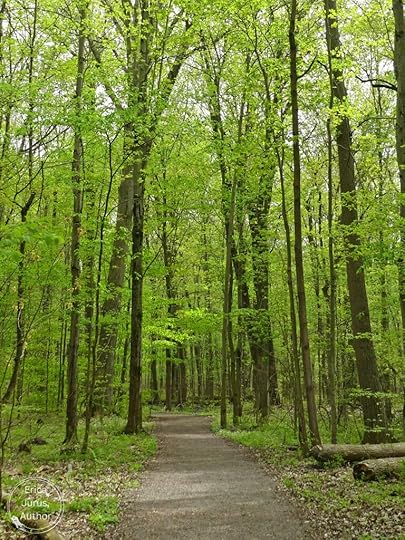
Studies have shown that people who live in communities with lots of trees feel healthier and have fewer heart conditions than those who live in less green areas. Research into links between nature and dementia have been promising: during a 10-week woodland activity program for patients with early stage dementia, being in the woods was found to improve spatial awareness and promote mental well-being, two things that erode significantly in those suffering from the disease.
Plants and flowers oxygenate the air, boosting our brain cells and improving memory, clarity and concentration. Even having them in your home has an effect, but how much better to surround yourself by them in a beautiful garden on a beautiful day. Research has shown that being around plants helps you concentrate better, both at home and at work, and can improve attention span and memory performance by as much as 20%. Studies with children revealed that their attention and memories improve when they’re exposed to greenery.
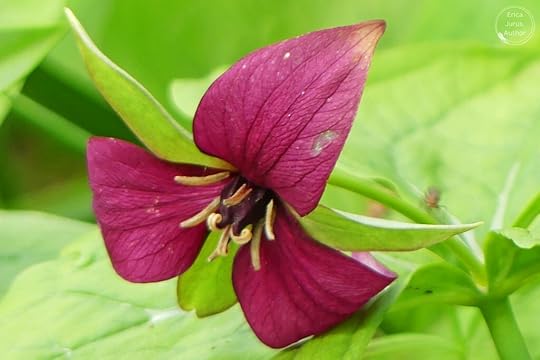 A beautiful Purple Trillium flower
A beautiful Purple Trillium flowerWhen we’re exposed to nature, even for just a short time, our parasympathetic nervous system, which operates in quiet, resting conditions, gradually takes control, lowering our blood pressure and pulse rate, reducing cortisol levels and even inflammation, and elevating our mood. Just being in forests helps us be relaxed, well and happy.
We can also embed biophilia in our homes in a number of ways, even if we aren’t lucky enough to live out in the country or on a lakeshore. Bringing in representations of nature, whether artwork or even natural materials; creating ways to interact with nature (one of the reasons I love to open the windows when the weather gets warm enough, to let in the sounds and scents of the outdoors); having household plants (I do my best) – these are all ways to both connect with nature as much as we can and remember why that’s so important to us.
But there’s still nothing better than getting right out into it. So what are you waiting for?
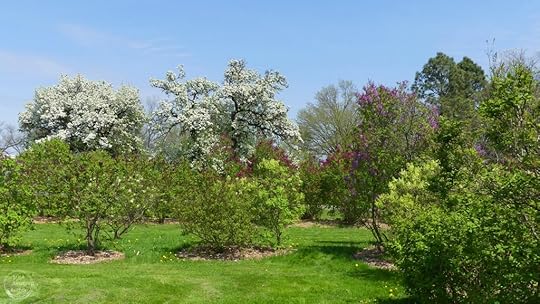 Wandering through the burgeoning lilac blossoms in the Centennial Lilac Garden, Niagara Falls
Wandering through the burgeoning lilac blossoms in the Centennial Lilac Garden, Niagara FallsThe post What is biophilia and why is it trending first appeared on Erica Jurus, author.



